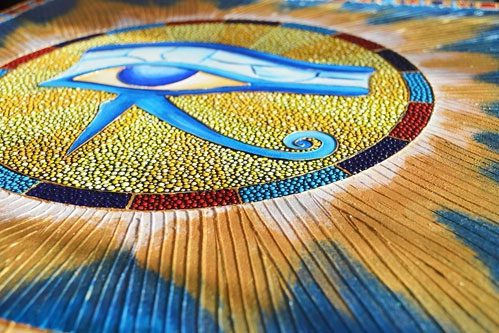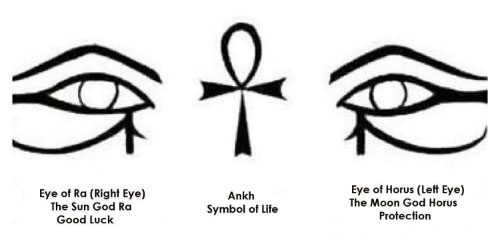The Eye of Horus symbolizes health, life, and resurrection, and it was once featured in the 12th layer of the mummy of Tutankhamun.
Visitors to Egypt often encounter the Eye, known as the Eye of Horus, according to Mythologian.
Horus is the sky god with the body of a man and the head of a hawk, the son of Osiris and Iris. Thus, he sees everything through the keen eyes of a hawk. Horus represents health, life, and resurrection. His right eye is white, symbolizing the sun, while his left eye is black, representing the moon. Consequently, the people of Egypt associated Horus’s right eye with the sun god, Ra, and his left eye with the moon god, Thoth.

Visitors to the Louvre Museum in France will also have the opportunity to admire the Eye of Horus, dating back to the 5th to 3rd centuries BC. (Photo: Gizmodo).
In the 2nd century, Galen of Pergamon, a renowned Roman physician and philosopher of Greek origin, borrowed the Egyptian eye symbol to impress his patients. This symbol later evolved into the Rx symbol we commonly see on prescriptions. It signifies healing and unity. The Eye of Horus was also found in the 12th layer of Tutankhamun’s mummy.
Legend has it that during a battle, Horus lost his left eye. Later, the moon god helped him restore this eye. As a result, his left eye no longer shines as brightly as his right eye, the sun’s eye.
A symbol resembling the Eye of Horus, which many visitors might confuse, is the Eye of Ra.

The distinguishing feature between the Eye of Ra and the Eye of Horus is that the Eye of Ra resembles the right eye, while the Eye of Horus (Egyptian eye) resembles the left eye. (Photo: Easystudy).
The Eye of Ra symbolizes conquest and the defeat of enemies. This eye was also used to represent a series of Egyptian goddesses such as Mut, Bastet, Hathor, Wadjet, and Sekhmet. Although regarded as a symbol of violence and destruction (like the heat of the sun), the Eye of Ra is also considered a symbol of protection. Therefore, it frequently appears on amulets and house walls. In ancient times, this eye often symbolized royal power.
Today, tourists can also admire this famous Egyptian eye at several other renowned locations around the world, such as the Louvre Museum in France, the Walters Art Museum in the U.S., and the British Museum in London, the capital of England.




















































